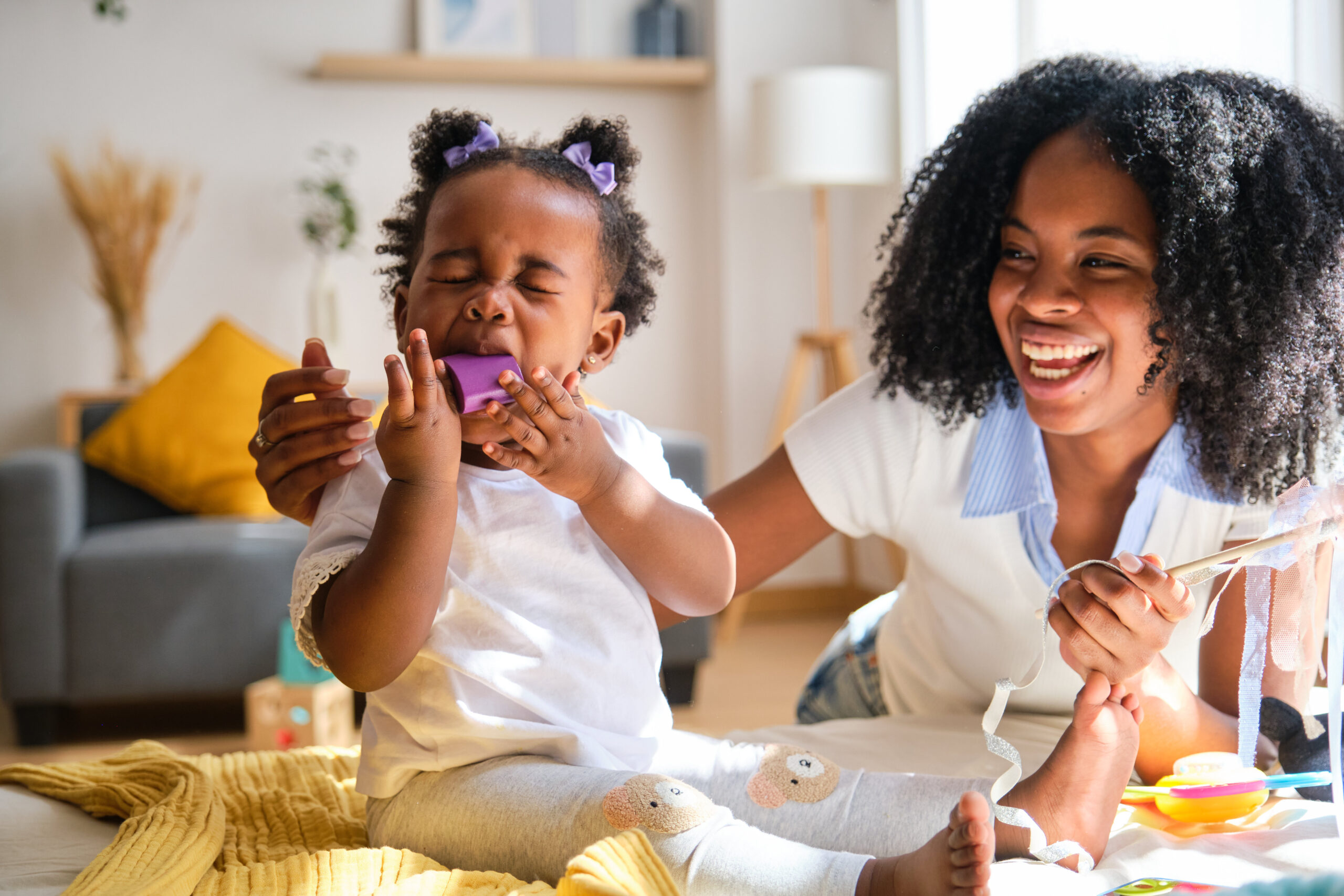A woman is holding a baby and the baby is playing with a toy. Scene is happy and joyful.You might have come across a range of parenting styles, some parents choose to stick to gentle parenting while others have a more authoritarian approach. With so many options, it’s difficult to narrow down one that fits you and your child.But what if you don’t have to stick to just one? We all know parenting is a journey and parenting styles are often catered to one size fits all.Yet children are always changing and so with that, surely the way we parent them would also change.The benefits of using multiple parenting stylesRelationship expert and founder of Chapter2, Nicky Wake says that there can be a benefit of using different styles to cater to the needs of children.She explained that multiple different parenting styles for different situations can allow flexibility which can be more effective in addressing the varied needs of children.“Firstly, different situations require different approaches. For instance, a gentle parenting approach might work well for guiding a child through a tantrum by understanding and addressing their emotional needs.“However, a more authoritative approach might be necessary when setting firm boundaries, such as enforcing safety rules,” says Nicky.Alongside this, Nicky says it’s important to remember that children have unique personalities and developmental stages. What works for one child might not work for another, so a flexible approach allows parents to tailor their parenting to each child’s behaviour, ensuring that the needs of each child are met appropriately.Another point she makes is that different styles offer a balance between discipline and nurture. While gentle parenting focuses on empathy and emotional support, other styles may emphasise structure, discipline, and clear expectations.Baring this in mind, a combination of styles can help ensure that children receive both the emotional support and the behavioural guidance they need.“You need to also look after yourself and manage your own stress. Sticking rigidly to a single parenting style, such as gentle parenting, can sometimes cause stress for parents, especially if they feel they are not living up to its social standards.“Flexibility can relieve this pressure by allowing parents to adjust their approach based on what is practical and effective in a given moment, reducing feelings of guilt or inadequacy,” she explains.Some situations may even require a firmer approach to ensure safety and instil important values.For example, firm intervention may be necessary if a child is about to engage in dangerous behaviour.Nicky says that in such cases, authoritative or even authoritarian techniques may be more effective than gentle ones.“By being flexible and employing a range of parenting styles, parents can respond more effectively to the dynamic and evolving needs of their children, creating a balanced and supportive environment that promotes healthy development,” she concludes.Related…People With Kids Are Sharing The Modern Parenting Trends They Disagree WithThings That People Think Are Clear Signs Of Bad ParentingMindy Kaling Reveals The 1 Thing That’s Made Her Rethink Gentle Parenting Parents, life as a parent, Parenting styles, life-as-a-parent, parenting-styles HuffPost UK – Athena2 – All Entries (Public)
You might have come across a range of parenting styles, some parents choose to stick to gentle parenting while others have a more authoritarian approach.
With so many options, it’s difficult to narrow down one that fits you and your child.
But what if you don’t have to stick to just one? We all know parenting is a journey and parenting styles are often catered to one size fits all.
Yet children are always changing and so with that, surely the way we parent them would also change.
The benefits of using multiple parenting styles
Relationship expert and founder of Chapter2, Nicky Wake says that there can be a benefit of using different styles to cater to the needs of children.
She explained that multiple different parenting styles for different situations can allow flexibility which can be more effective in addressing the varied needs of children.
“Firstly, different situations require different approaches. For instance, a gentle parenting approach might work well for guiding a child through a tantrum by understanding and addressing their emotional needs.
“However, a more authoritative approach might be necessary when setting firm boundaries, such as enforcing safety rules,” says Nicky.
Alongside this, Nicky says it’s important to remember that children have unique personalities and developmental stages. What works for one child might not work for another, so a flexible approach allows parents to tailor their parenting to each child’s behaviour, ensuring that the needs of each child are met appropriately.
Another point she makes is that different styles offer a balance between discipline and nurture. While gentle parenting focuses on empathy and emotional support, other styles may emphasise structure, discipline, and clear expectations.
Baring this in mind, a combination of styles can help ensure that children receive both the emotional support and the behavioural guidance they need.
“You need to also look after yourself and manage your own stress. Sticking rigidly to a single parenting style, such as gentle parenting, can sometimes cause stress for parents, especially if they feel they are not living up to its social standards.
“Flexibility can relieve this pressure by allowing parents to adjust their approach based on what is practical and effective in a given moment, reducing feelings of guilt or inadequacy,” she explains.
Some situations may even require a firmer approach to ensure safety and instil important values.
For example, firm intervention may be necessary if a child is about to engage in dangerous behaviour.
Nicky says that in such cases, authoritative or even authoritarian techniques may be more effective than gentle ones.
“By being flexible and employing a range of parenting styles, parents can respond more effectively to the dynamic and evolving needs of their children, creating a balanced and supportive environment that promotes healthy development,” she concludes.







